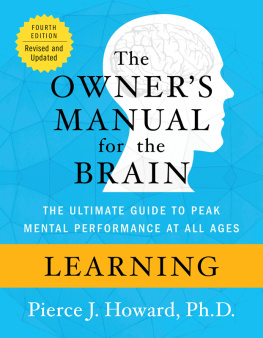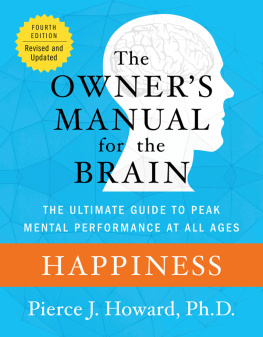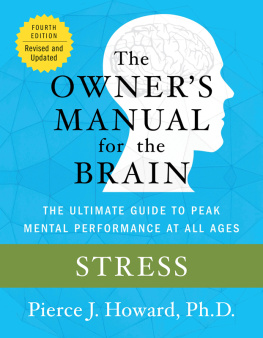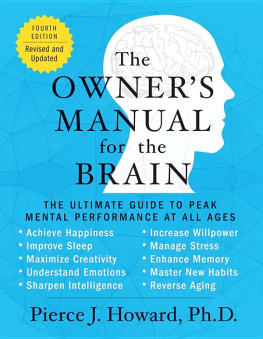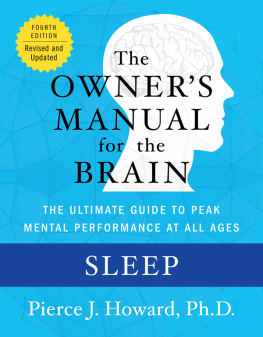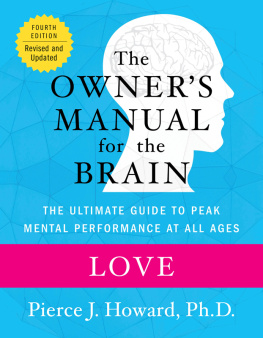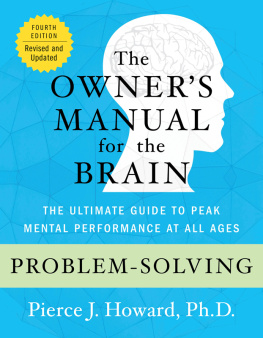W hat sculpture is to a block of marble, education is to the human soul. Joseph Addison | Acquiring and Remembering Information |
L earning is memory; memory, learning. Learning entails two processes: acquiring and retaining. Psychologists and educators would call these processes short-term memory and long-term memory. Whether we are learning a telephone number, a chess strategy,
a role in a play, a dance step, or how to recover from a computer mishap, in order to say that we have learned something we must be able to demonstrate that not only have we acquired the knowledge or skill, i.e., that we understand it and can use it properly, but that we also have retained that understanding so that we may continue to use it over time. If we learn how to use something but forget soon afterward and must look it up (on the Internet, in a reference book, or from an associate), then we have only done half the job. To completely learn something, we must be able to use it repeatedly and independently. If I must continue to refresh a memory, I have only partially learned it.
A word of clarification is in order: To remember something is not the same thing as to memorize something. To memorize something is not the same thing as to learn something. Memory is used in two senses here. If I learn to play a Bach sonata, that means that I have mastered the notes and can play them for an audience. However, it does not mean that I have committed it to memory, or memorized it. Or I might learn to make a souffle without memorizing the ingredients. Or I might learn how to use a complex statistical formula without memorizing its elements. On the other hand, in all three cases, I might commit the elements to memorythe note, the ingredients, and the mathematical symbols, so that I am free of the texts that bear them. To memorize is a specific kind of learning goal that does not necessarily entail understanding. I could memorize a Latin quotation and speak it impressively at my next cocktail party without understanding a jot of it. So, the two meanings that we will necessarily modulate between are as follows: to remember how to use, do, or apply something, without regard to whether we need prompting as to the specifics, and to remember all of the details of something without needing any prompting as to the specifics. The first is like conducting Beethovens Fifth Symphony from a score, while the second is like conducting without the score. In both cases the conductor has learned the piece, but only in the second case have they memorized it. One can learn how to do something, and remember how to do it, without having memorized it.
Another key point to keep in mind with respect to how we use the word memory is that it comes in different modes: memory for words (e.g., a poem), for numbers (e.g., telephone numbers or the times tables), for images (e.g., faces or artworks), for sounds (e.g., specific engine noises or melodies), for movements (e.g., dance steps), for nomenclatures and organizational schemes (e.g., an organization chart or the periodic table of elements), for interpersonal idiosyncrasies (e.g., what motivates different people), and for personal preferences (e.g., things I do and dont like). These eight areas are called talents, or multiple intelligences, and are discussed in more detail in chapter 29.
In this chapter we will focus initially on the mechanics of learning and memory. We will follow this by presenting researchers recommendations on how to learn most effectively. Because so many findings must be presented, I have sought an organization scheme to help make sense of them. I found such a scheme in the writings of one of the great thinkers of the Renaissance, Rotterdams Desiderius Erasmus, who wrote in 1512 (in Latin!), The best memory is based on three important things: namely study, order, and care. Memory expert Joan Minninger (1984) has renamed these three emphases as rehearse, file and intend. I could paraphrase the two of them as allow time for practice, find a pattern to help you make the meaning personal, and make up your mind that you really want to remember it. I would change the sequence, however, in order to emphasize the importance of making up your mind that you in fact want to remember something. That comes firstwhen you decide you strongly want to learn and remember something, it behooves you to find a pattern to facilitate memory and then to practice it repeatedly. Intend, file, and rehearse.
Here is an example from a common situation: You meet someone and really want to remember their name, for whatever reason (possible romantic connection, political ally, someone to recruit for a service project, and so forth). Thus, you intend or care to remember their name. Second, you say to yourself, Her name is Amanda Campbell. What pattern about her suggests Amanda, or Campbell? Well, she has red hair, and the red could be associated with the famous Campbells soup can. She also has noticeable hair on her upper lip, making her look somewhat manly. So, A-MAN-da Campbell. You then picture a can of Campbells soup with her face on it with a pronounced mustache. You make up your mind to say her name several more times that evening. Each time you say it silently, you picture the soup can. Eventually, when you see her, you see the soup can and the name comes to mind. Associating the name with the soup can and mustache is the file or order phase of the process, and repeating the name in association with the image is the rehearse or study phase.
After I present the mechanics of learning and memory, you will find the remainder of the chapter organized in these three groupings:
Strategies for intending to, or wanting to, or caring about remembering
Strategies for organizing, associating, or filing the new learning in some meaningful way
Strategies for practicing, rehearsing, or studying what you have successfully put into short-term memory so that it will transfer into long-term memory
Note: In earlier editions of this book I included a section on so-called learning styles. However, a report in Psychological Science in the Public Interest in December of 2008 called into question the usefulness of learning styles. According to the meshing hypothesis, when students of a certain style are taught by a teacher employing that style, the student learns more than students who are taught by a teacher whose style does not mesh with or match the students. However, according to the authors (Pashler, McDaniel, Rohrer, and Bjork, 2008), The contrast between the enormous popularity of the learning-styles approach within education and the lack of credible evidence for its utility is, in our opinion, striking and disturbing. If classification of students learning styles has practical utility, it remains to be demonstrated (p. 117). They concluded that the desire of the individual student to learn and their effectiveness in pursuit of learning is independent of stylistic differences.
Research on memory has taken a significant turn in recent years. Memory used to be regarded as a structure; now it is seen as a process. A memory was thought of as a single unit with an identifiable place of residence somewhere in the brain that could be recalled when necessary. Now a memory is viewed as a reconstruction from many different chunks stored redundantly throughout the brain (see topic 20.2). Bartlett (1932, p. 213) foresaw this development when he wrote:
Remembering is not the re-excitation of innumerable fixed, lifeless, and fragmentary traces. It is an imaginative reconstruction, or construction, built out of the relation of our attitude towards a whole active mass of organized past reactions or experience, and to a little outstanding detail which commonly appears in image or in language form. It is thus hardly ever really exact, even in the most rudimentary cases of rote recapitulation, and it is not at all important that it should be so.
Next page

